When I started quilting, I used to just tuck the end of the binding into where I started. It worked okay, but I wasn't quite happy. Then I learned how to join my binding ends together. It's such a good look, and it's too hard, provided you slow down and give yourself space to work.
How much fabric do you need?
First, you want to figure out how much binding you need. To do that, measure the perimeter of your quilt, then add 12 inches to account for going around the corners. For example if your quilt is 70 x 85 inches, you would add 70 + 70 + 85 + 85 = 310 + 12 = 322 inches. Divide that number by 40 (a conservative width of fabric) to get 7.75. This is the number of strips you need to go around your quilt. We'll round that up to the nearest whole number 8.
I like to cut my bindings at 2.5 inches, so 8 strips multiplied by 2.5 inches equals 20 inches. If I were buying this from a quilt shop, I'd buy 2/3 yard (24 inches) to account for washing and squaring up.
Making the binding
Join your 2.5 inch strips with a 45 degree angle seam so that you have one continuous length.
Attaching the binding
I find a place to start, usually somewhere in the middle of one of the sides. I almost always lay out the binding as if I'm applying it to see if a seam is going to land at a corner. If it will, I adjust where I'm going to start. Once I've found a suitable place to start, I pin the binding to the quilt and take it to my machine.
I trim my quilt before I put the binding on. Then I lay the binding about 1/8 inch inside the raw edge of the quilt. You want the raw edges of the binding to be toward the outside. I leave a starting tail of about six inches before I start stitching. Stitch with a 1/4 inch seam allowance.
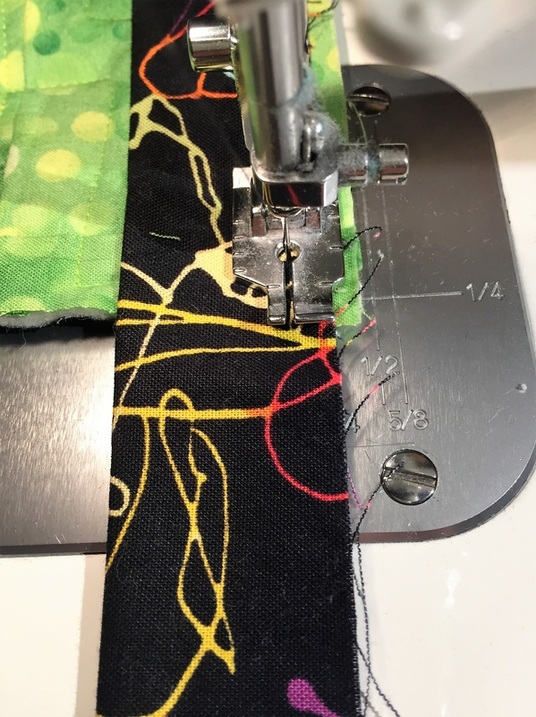
First, take the quilt out of the machine. Then fold the binding away from the direction you're going to be heading.
What we're going to do is measure and cut our ending tail so that we have exactly a 2 1/2 inch overlap of the two ends.

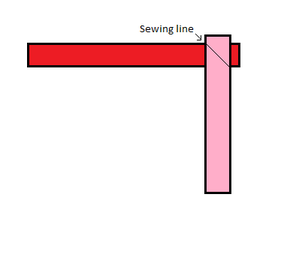

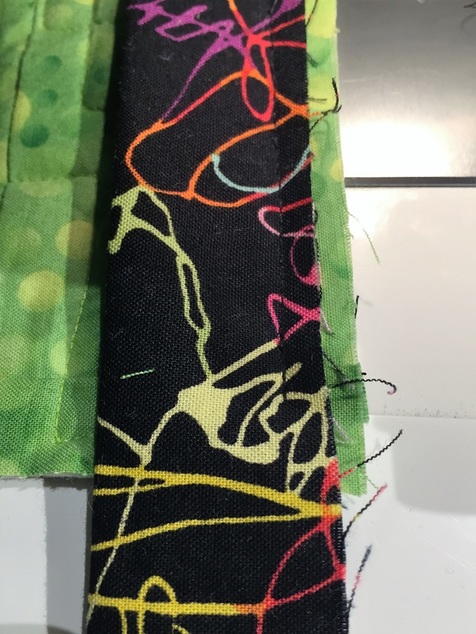
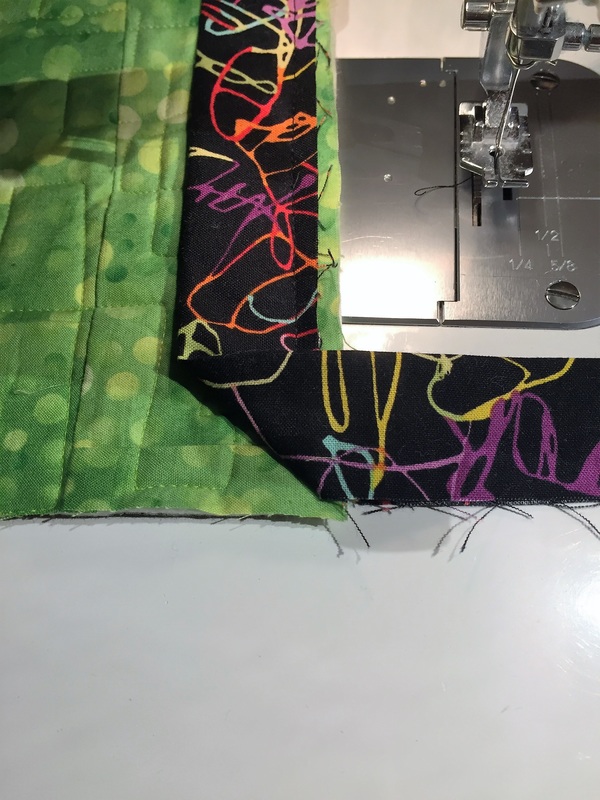
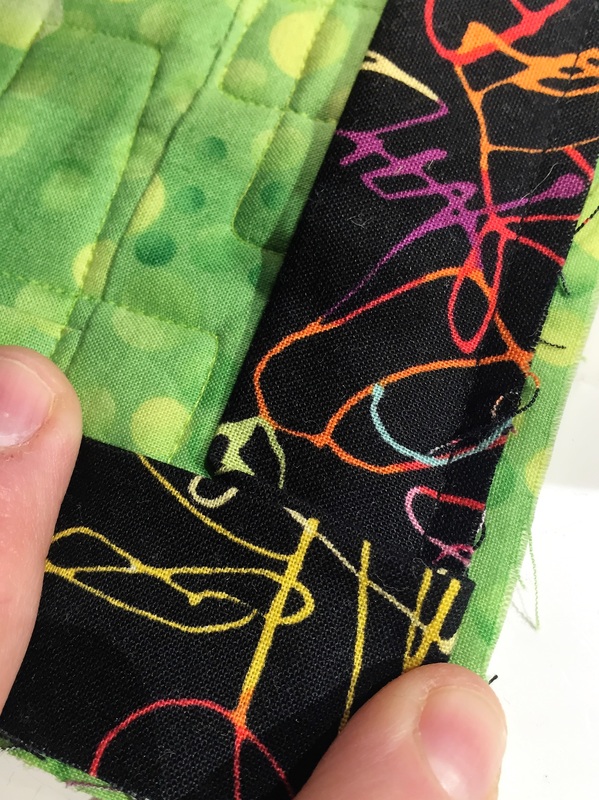


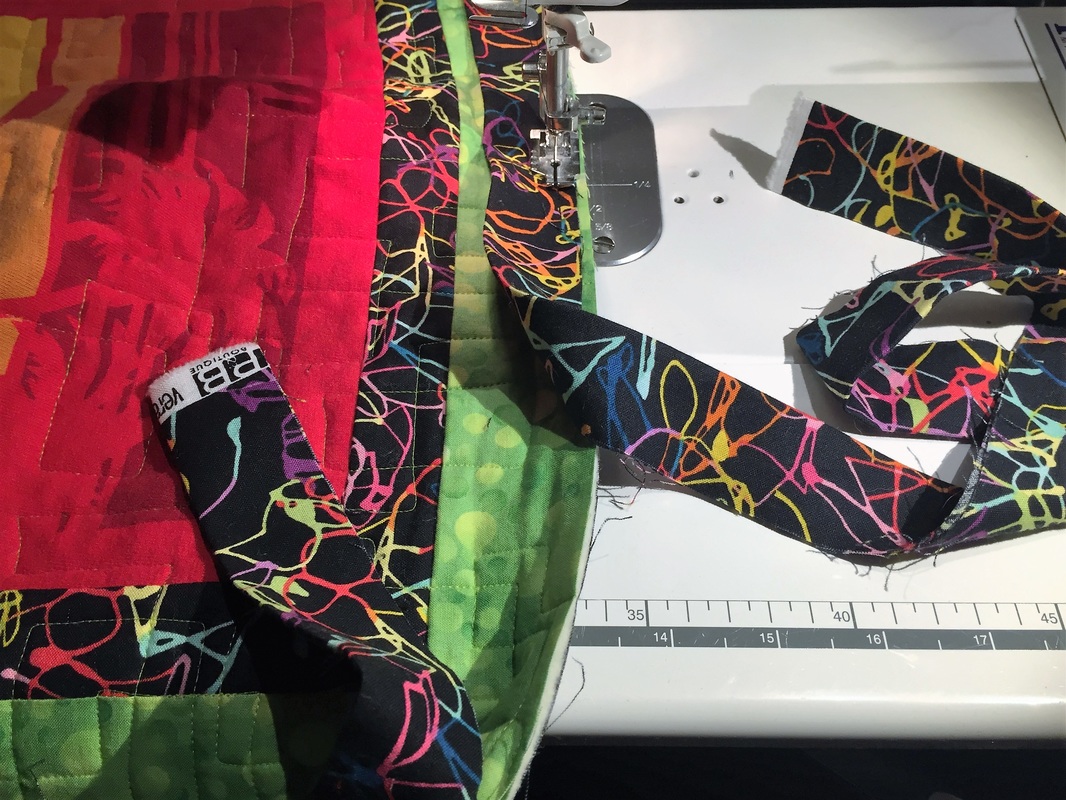


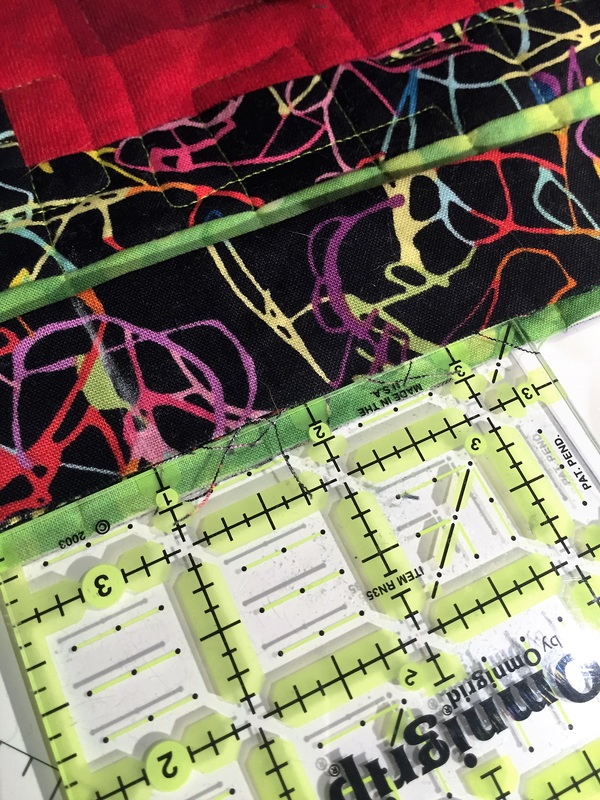

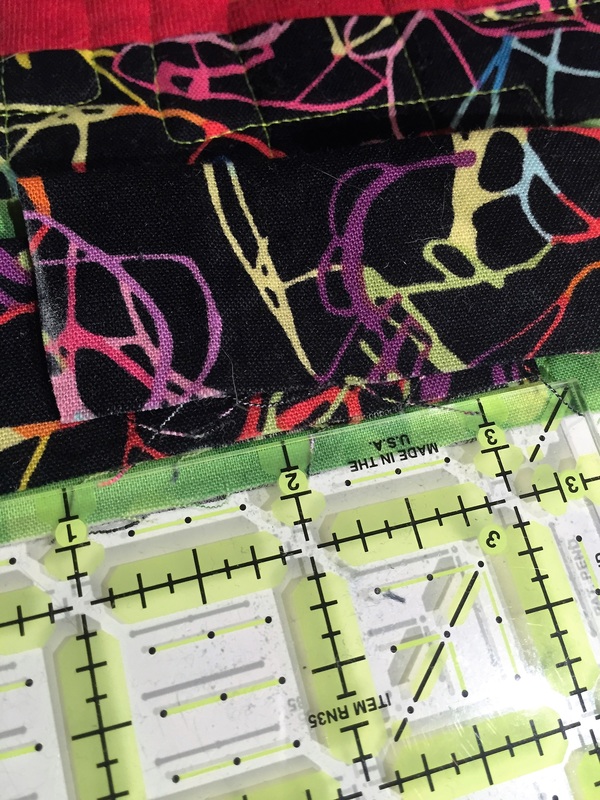
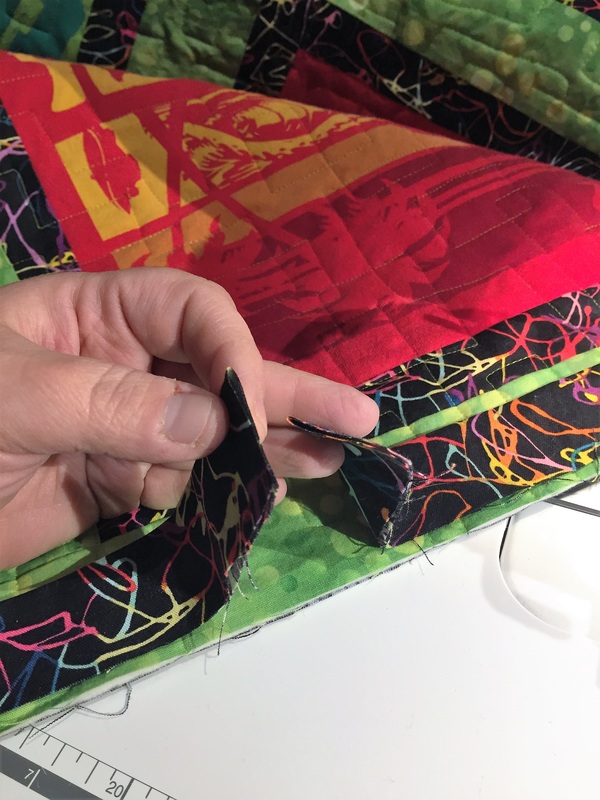
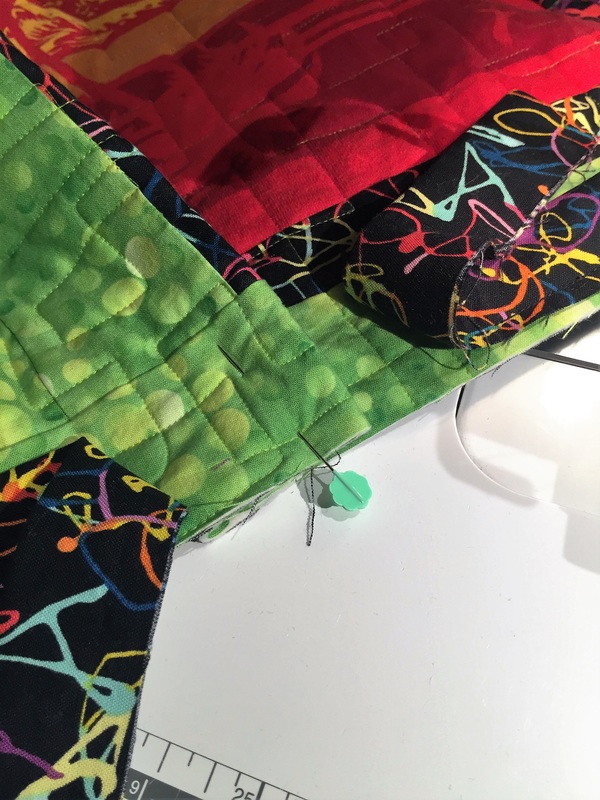

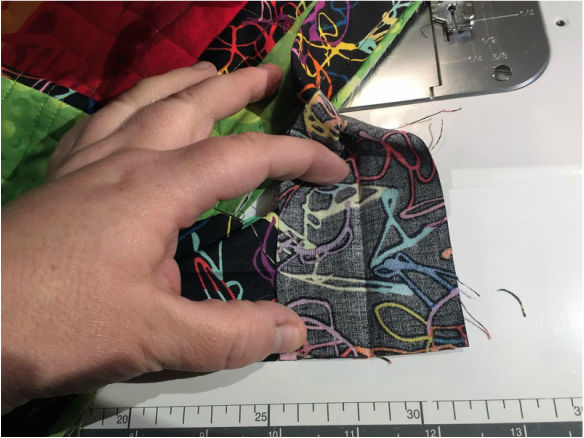
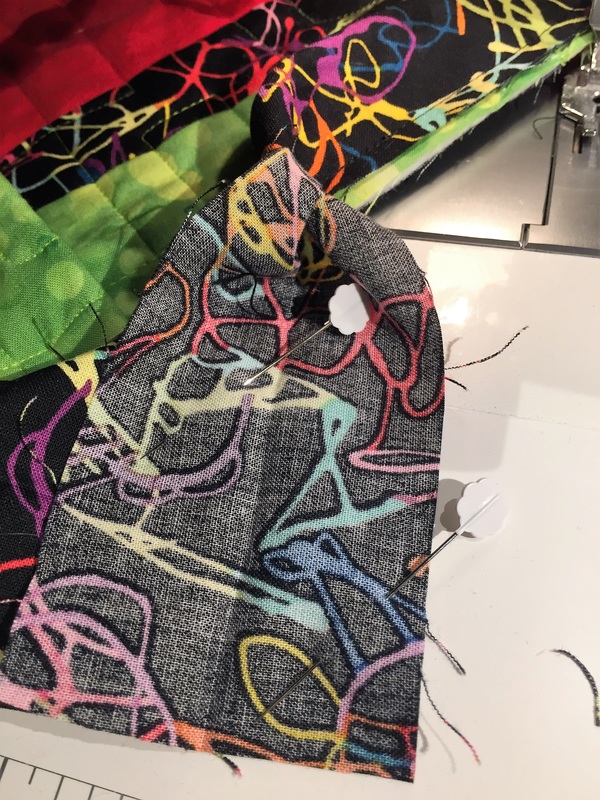
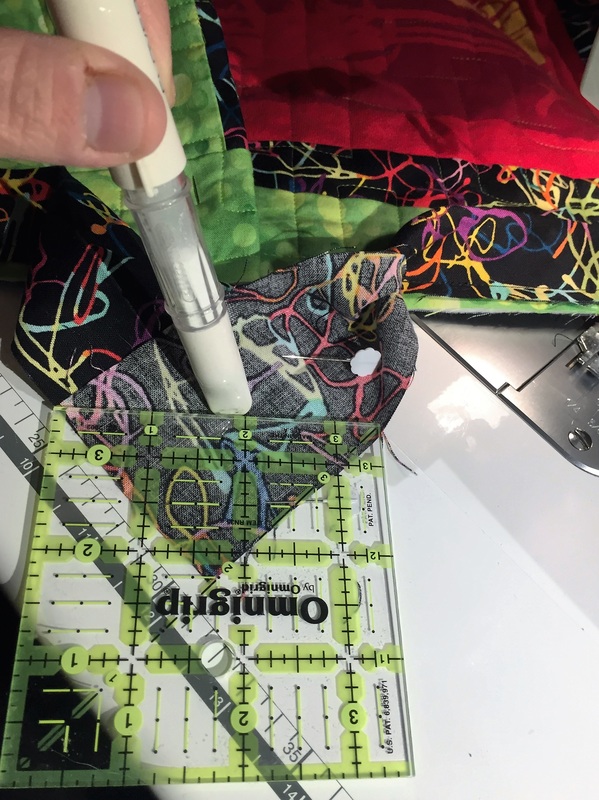
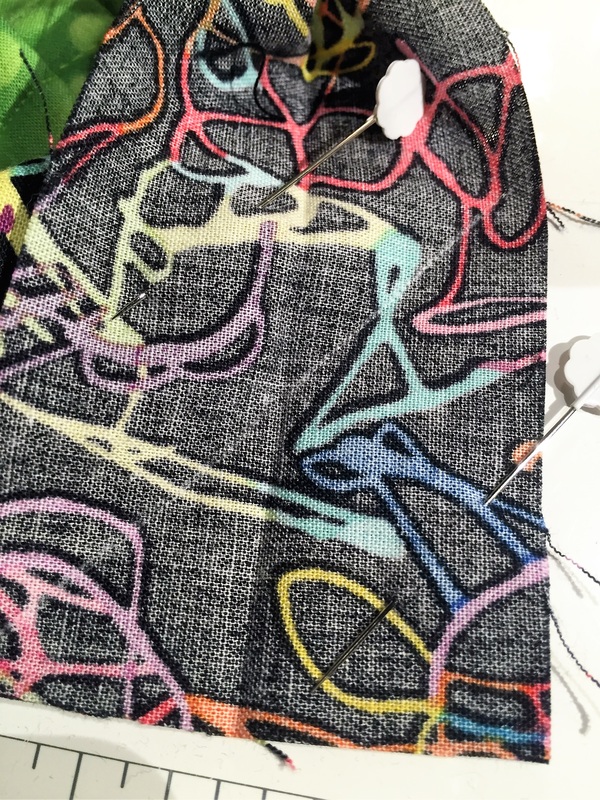
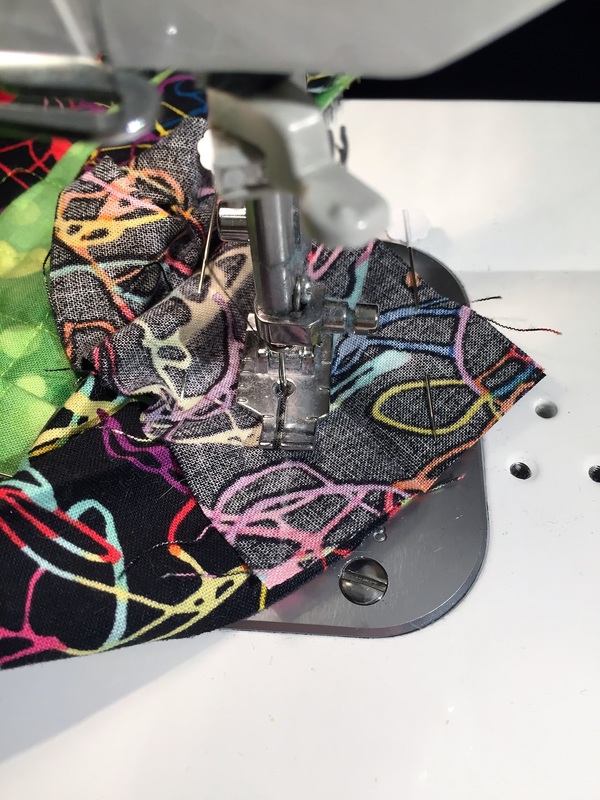
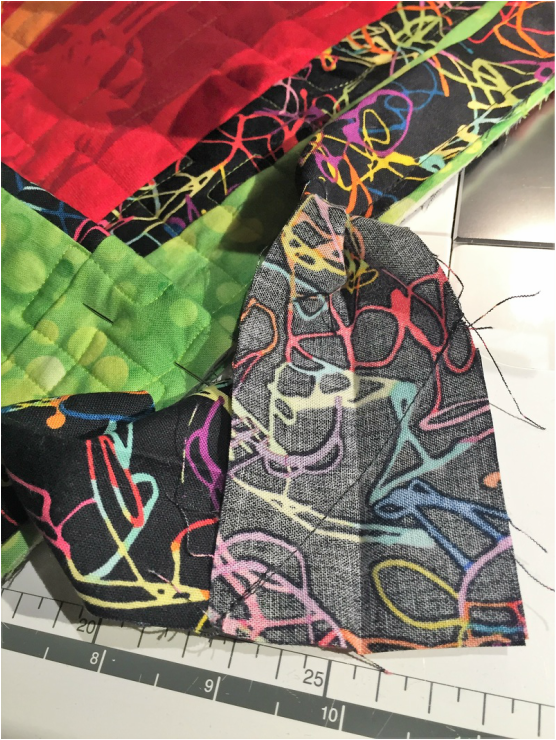

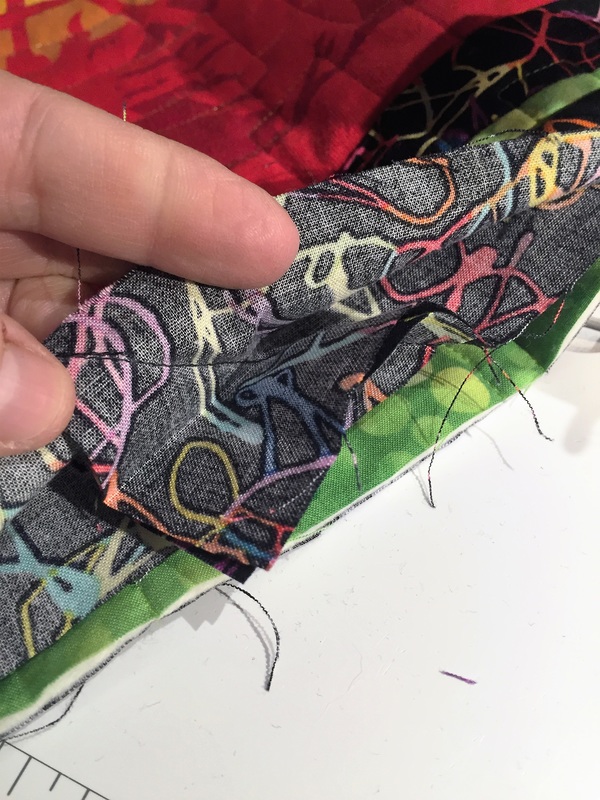

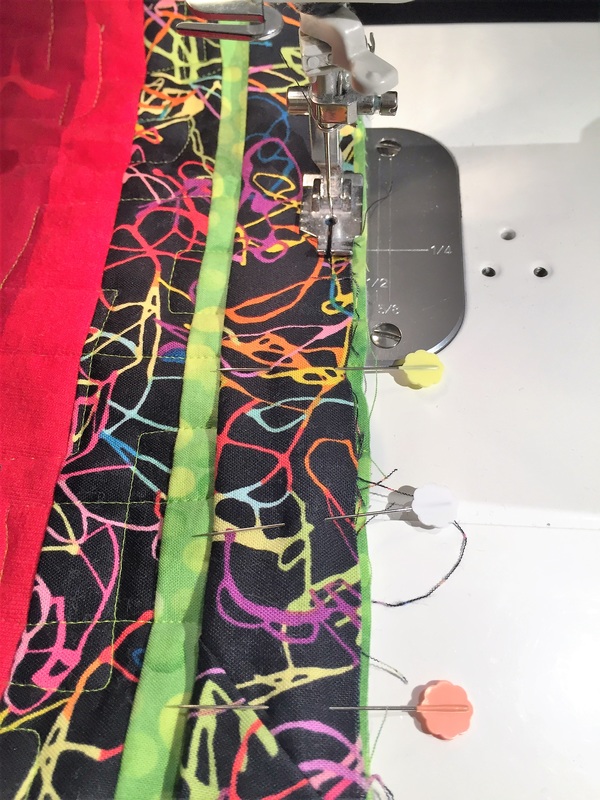
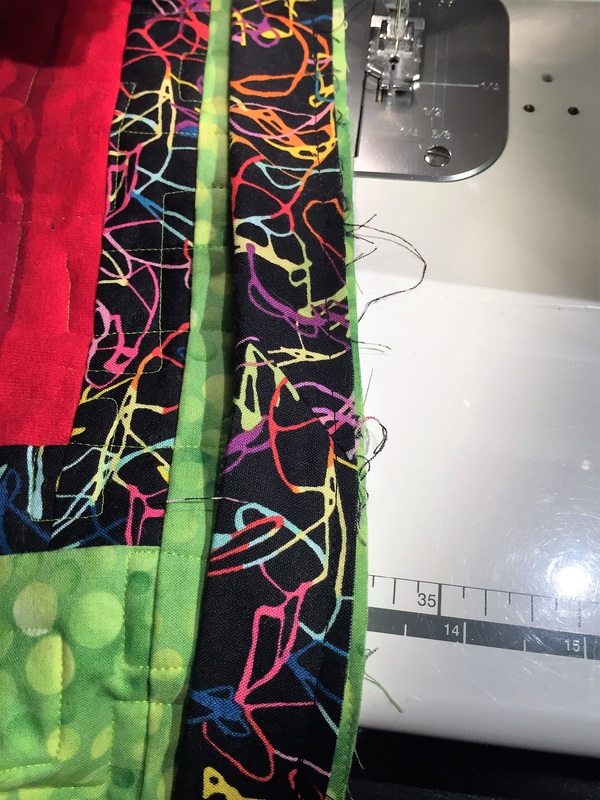
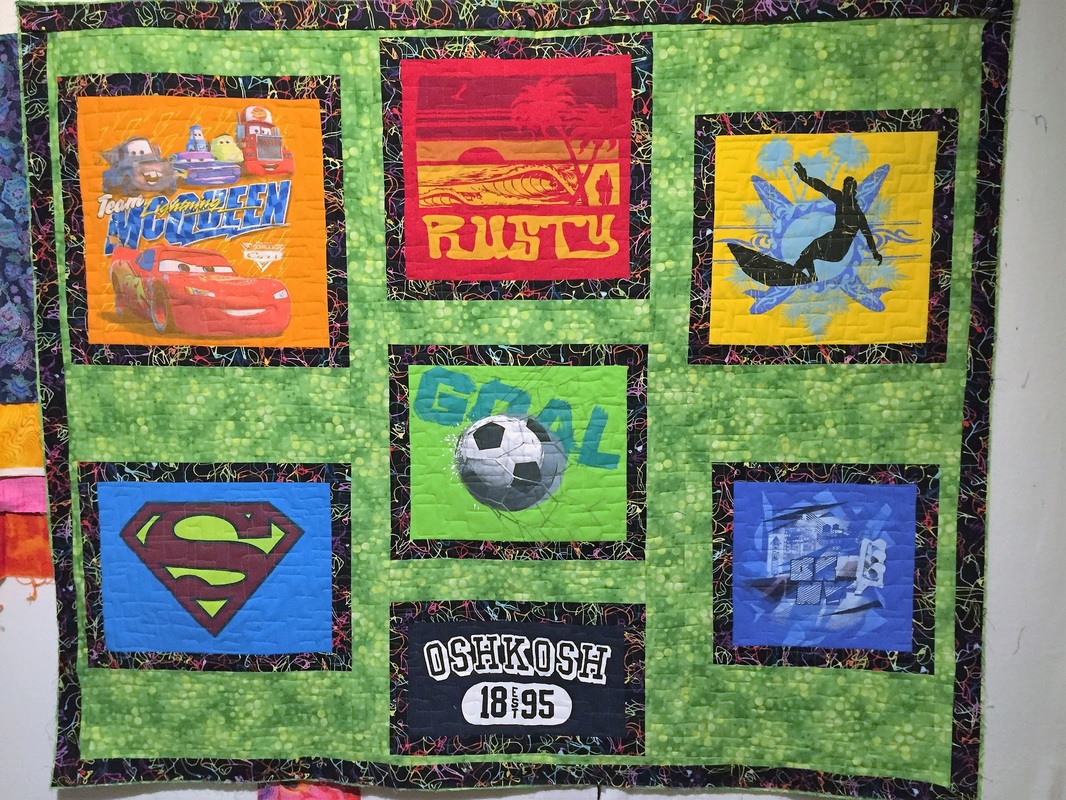
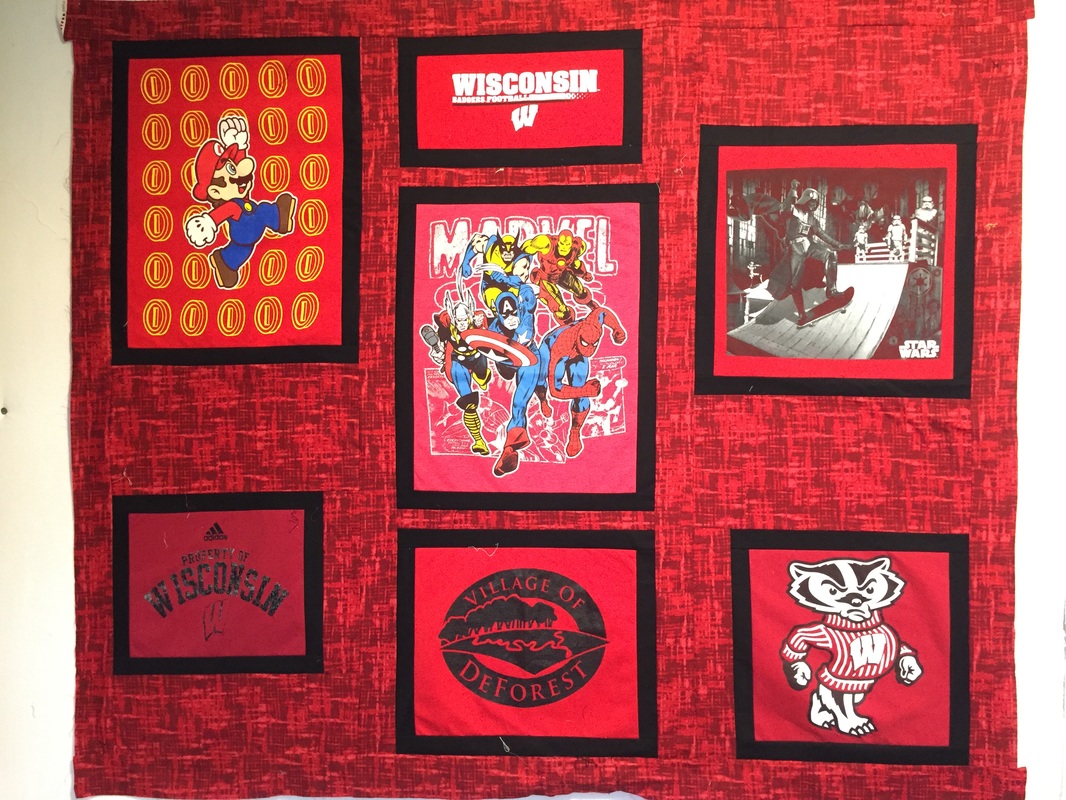



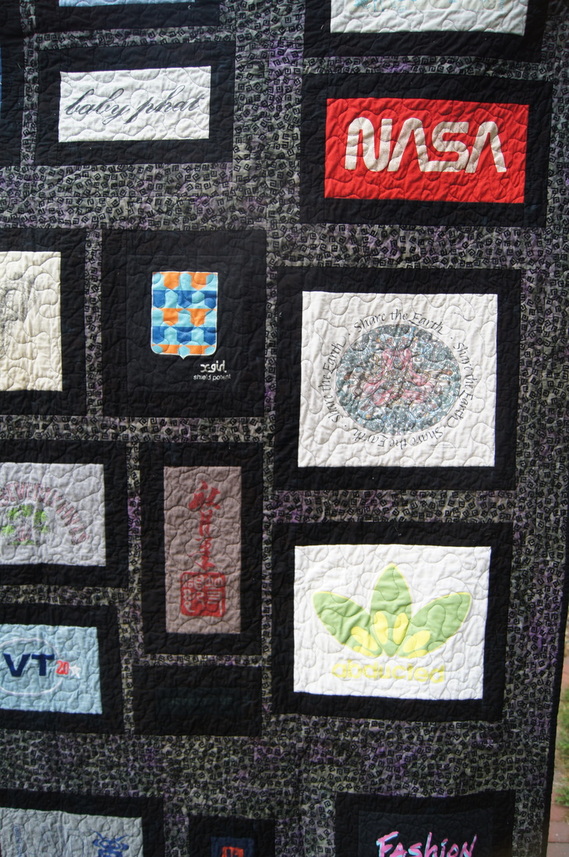
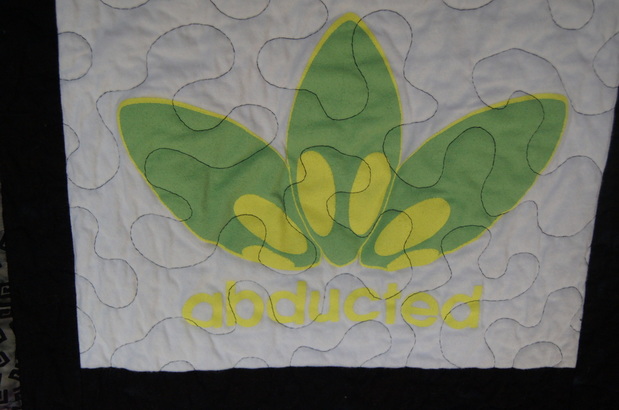
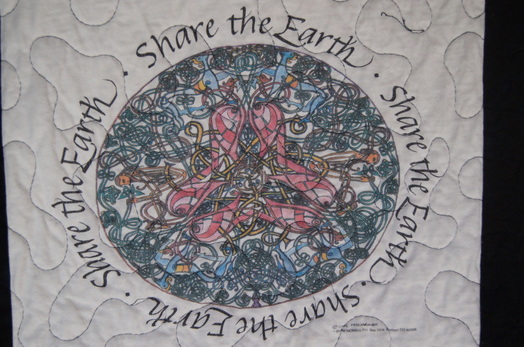
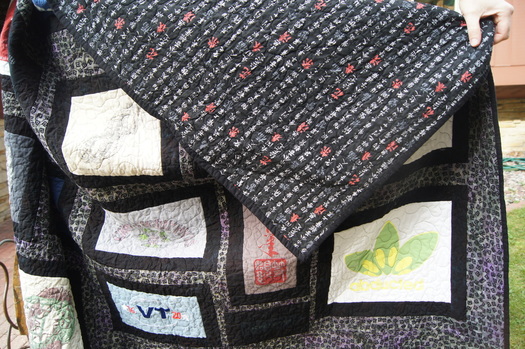


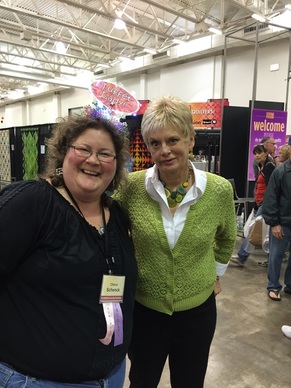

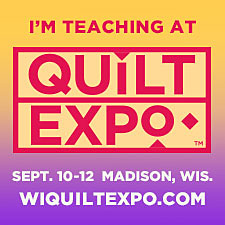

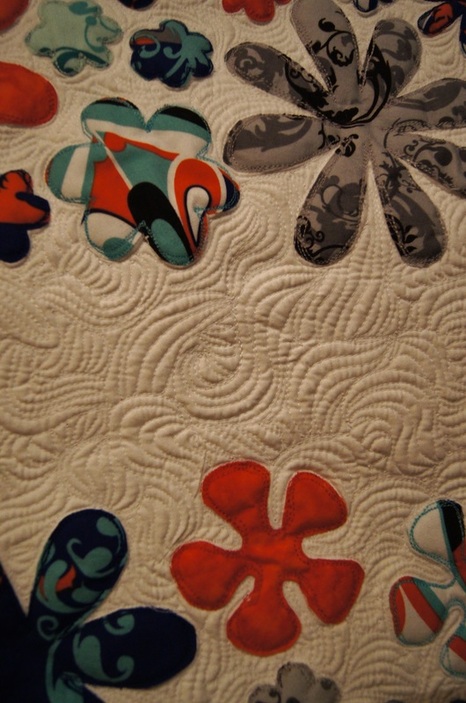
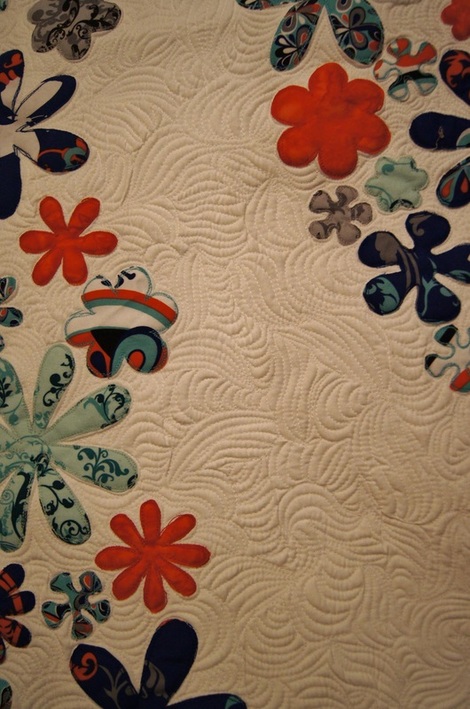
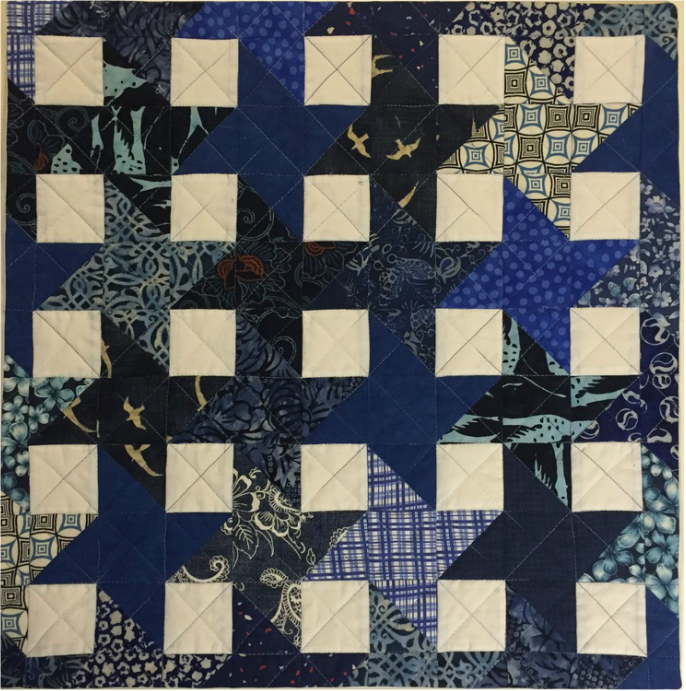
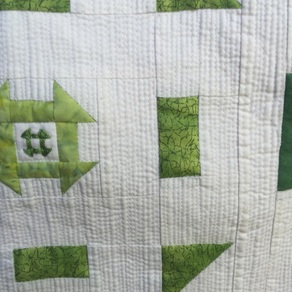
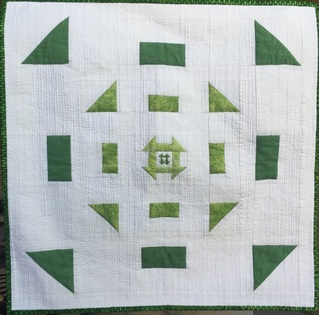
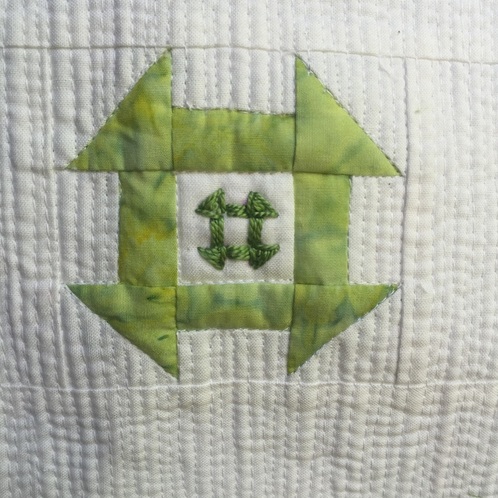
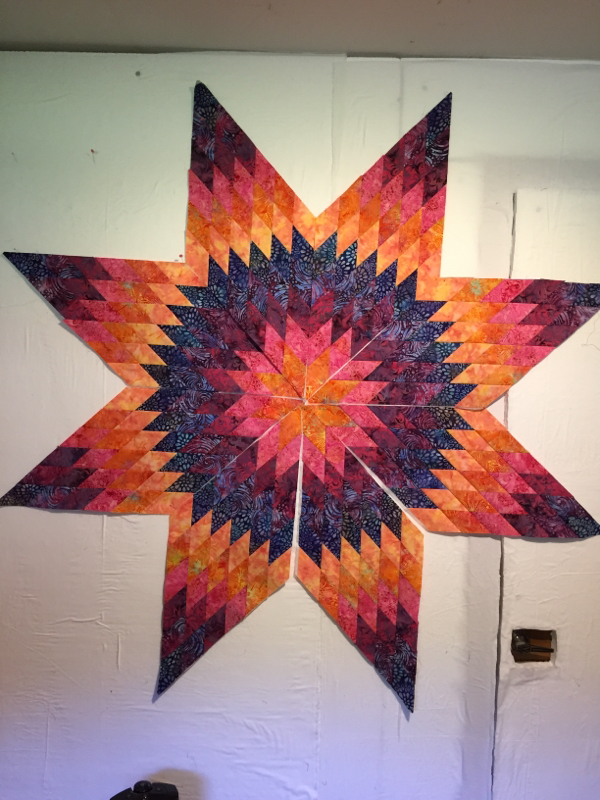

 RSS Feed
RSS Feed